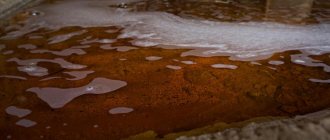Alchemists in search of the philosopher's stone
In the middle of the last century, the news spread throughout the world that scientists had managed to synthesize gold artificially. Many took this news as the long-awaited news of confirmation of the receipt of the philosopher's stone. But not everything is as simple as we would like. The resulting gold had nothing to do with the philosopher's stone.
It is no secret that many alchemists of the Middle Ages searched for the philosopher's stone only in order to somehow convince their patrons to allocate funds for their chemical experiments and the study of occult sciences. As a result, humanity has gained a wealth of knowledge about the properties of chemicals. Over time, occult knowledge was forgotten and only some information that modern astrologers use has reached our time.
Later, scientists began to study the atom. They could be compared to modern alchemists, in the good sense of the word. They, just like their predecessors, walked at random, sometimes exposing their lives to mortal danger. And they also discovered unknown horizons of the structure of matter.
Deadly Friend - Quicksilver
The story of Nicolas Flamel
The story of Nicolas Flamel, a book copyist from Paris, is still considered mysterious. This man tried for a long time to get gold from mercury. There is a legend that back in the 14th century he unraveled a mystery that had interested people for centuries: is it possible to artificially produce a precious metal. It all started with the fact that an ancient manuscript with incomprehensible signs and symbols fell into the hands of this man. Nicolas tried to decipher this text for 20 years, but all efforts were unsuccessful. None of the experts in ancient languages to whom Flamel turned could help him.
To unravel the mystery of the manuscript, I had to travel outside of France. And only in Spain, after two years of searching for the right person, did luck smile on him. Here he met a real expert in the ancient Jewish language. The scientist, having learned about the manuscript, immediately went with Nicolas to Paris, since the copyist did not risk taking the texts with him. But the scientist was unable to reach France; on the way he fell ill and died. But still, he managed to tell Flamel something.
Armed with the knowledge gained, Flamel began deciphering the manuscript. His labors were not in vain; in January 1382, Nicolas was able to obtain silver from mercury, and soon his experiments with gold were crowned with success. Perhaps this is just a legend. But the fact is certain that the modest scribe became the owner of a huge fortune in a short period of time. After his death, many seekers searched his house for gold, but no one was able to find anything. There is still no evidence that Flamel knew how to make gold from mercury.
Unknown isotopes
While studying gold isotopes, American physicist Arthur Dempster discovered in 1935 that the noble metal has only one stable isotope with a relative mass of 197 . It is generally accepted that in order to synthesize it, one must have at one’s disposal an isotope with a much larger mass, but this simply does not exist in nature, and if it is synthesized artificially, then it cannot remain in a stable state for a long time. Therefore, all the efforts of scientists of the last century were aimed at obtaining a heavy isotope of gold.
Gold
This could only be achieved by using the elements closest to gold, mercury and platinum. It makes no sense to turn platinum into gold, since it is more expensive than it. What remains is mercury. In the early forties of the last century, research in this direction began in many nuclear laboratories. And in the spring of 1940 , physicists from Harvard University A. Scherr and K.T. Bainbridge was informed that they obtained the gold artificially. They managed to direct accelerated deuterons to a target made of lithium and thus obtain a flux of fast neutrons. In turn, the neutrons from the resulting lithium were used to bombard mercury. After conducting research, they came to the conclusion that gold was produced as a result of nuclear reactions.
But this gold consisted of unstable isotopes with mass numbers of 198 , 199 and 200 . After a few hours or days, it turned back into mercury, emitting beta rays into space. The reaction proceeds according to a well-known formula, which clearly describes this process well.
198Hg + n =198Au + p
Mercury has seven isotopes. And only three of them were able to turn into gold. Their mass numbers completely coincide with the numbers of the resulting gold. Later in March 1947, three physicists, colleagues of Professor Dempster Ingram, Hess and Gaidi, expressed a hypothesis, and after it proved that only 199 and 196 isotopes of mercury are capable of turning into gold. As a result of the experiment, they were able to obtain 35 100 grams of mercury . This reaction can be represented using the formula:
196Hg + n = 197Hg* + γ
But the process does not end there and continues further:
197Hg* + e- = 197Au
Mercury
How gold is made
One more example
Many years have passed since the discoveries of Nicolas Flamel. But the question of how to get gold from mercury remained open. Only at the end of the 19th century, the chemist Stefan Emmens announced to the whole world that he had managed to obtain a substance that could be called a precious metal.
The chemist called the substance obtained experimentally “argentaurum”, and it was made from silver, with the participation of mercury. Researchers from the USA carefully tested that substance and bought it back at the price of gold. These were three test bars. The scientist himself stated at the time that he was not going to disclose the technology and put gold into mass production, as this could have a bad effect on the economy not only of the United States, but of the whole world. But still, Emmens agreed to demonstrate the experience in Paris, at the World Exhibition. Shortly before the performance, the chemist disappeared without a trace. Most likely, his discovery was considered too dangerous.
Vasily Valentin (XV century): created hydrochloric acid and aqua regia
In all likelihood, this was the name of a monk from a Benedictine monastery in Erfurt, Germany. During his lifetime, he did not publish his works, but in the middle of the 15th century, one of the columns in the Erfurt Cathedral split and his alchemical treatises, including the famous “Twelve Keys to Philosophy,” were found in it. From the treatises it follows that Vasily Valentin discovered antimony and created hydrochloric acid, described in his works nitric and sulfuric acids, aqua regia, ammonia, sublimate and other mercury salts, some compounds of zinc, tin, lead, cobalt.
One of the quotes from Vasily Valentin says: “Penetrate into the depths of the earth and, by purifying, find the hidden stone, true medicine.” The first letters of these words in Latin (Visitatis Interiora Terrae Rectificando Invenietis Occultum Lapidem Veram Medicinam) form the word “vitriol” - this is what the scientist called the secret salt and solvent that he used in his magisterium. Many principles of Vasily’s work were borrowed later and subsequently applied by Paracelsus .
What is mercury
Mercury is called "living silver". This silver-colored metal remains in a liquid state at temperatures down to -39 ° C and at the same time has extraordinary mobility. At temperatures below -39 ° C it becomes a solid metal.
Mercury is odorless and tasteless, and evaporates easily at room temperature. The vapors of this substance are very dangerous to human health. Therefore, in domestic conditions, a broken thermometer can cause severe poisoning.
Pure mercury is extracted from an ore called cinnabar. This mineral substance is specially heated to high temperatures so that the mercury can evaporate, and then it is condensed. The densities of mercury and gold are 13,600 kg/m3 and 19,300 kg/m3, respectively.
Liquid mercury has the ability to roll into a ball, and it also has a pronounced ability to wet certain metals. A mercury ball can attract gold dust and absorb it into its mass. Ultimately, when the ball can no longer absorb gold particles, it will begin to crumble as a single mass.
Amalgamation method
This method of extracting gold from mercury is considered one of the most ancient. It is very harmful to health, therefore it is banned in the Russian Federation, but in many countries it is still used.
Amalgamation is the process of mixing mercury and a metal such as gold. Mercury balls do not dissolve the metal, but only moisten it, absorbing it. Subsequently, using various methods, such as evaporation, pure gold is obtained.
This method is used if washing black sand and grains of gold smaller than one millimeter does not help.
Amalgamation of gold
Mining gold using mercury has been known for a long time, at least 2000 BC. e. When ground with ore, mercury concentrates gold and silver. It does not dissolve metals, but only wets and disperses them, transforming them into a state that appears to be homogeneous, but multiphase, amalgam. In the amalgam one can detect particles of solid solutions and chemical compounds of gold and silver with mercury, evenly and stably distributed in the mass of liquid mercury.
For successful amalgamation, a clean gold surface is necessary; however, it is often coated with foreign oxides and adsorbed oxygen. Cleaning by friction or rinsing promotes amalgamation. If the surface is sufficiently clean, the rate of amalgam formation is determined by the diffusion of mercury into the metal; it increases with temperature; however, heating is dangerous due to the evaporation of mercury and the release of its toxic fumes. Mercury wets pure gold best. Its alloys with silver and silver amalgamate worse due to external contamination with oxides. Abrasion or fracture exposing the fresh surface promotes the formation of amalgam. The rate of amalgamation also depends on the purity of the mercury. Small impurities of lead and copper lower surface tension and therefore improve wetting, while large ones impede it. With an increase in the content of gold and silver in the amalgam, its viscosity increases and its mobility decreases, and significant contamination with base metals in excess of the total content of more than 0.1% is accompanied by the formation of surface films of the corresponding oxides. All this makes amalgamation difficult.
Amalgamation in water containing small amounts of electrolyte ions is more successful due to a shift in the maximum of the electrocapillary curve and a decrease in the surface tension of mercury. At the same time, the impurities of copper, which is often present, are very harmful, which is reduced to the metal by iron particles from the abrasion of crushing bodies in mills and is amalgamated. Copper contaminates the amalgam and increases mercury consumption. To prevent this, lime is added, which converts Cu2+ into insoluble hydroxide.
Silver is amalgamated as part of gold particles, and amalgamation is not used for it separately.
Amalgamation of platinum requires special conditions due to the greater strength of oxygen adsorption films. They are removed in sulfuric acid solution by the action of zinc amalgam.
For amalgamation, gold ores are mixed and ground with mercury or the ore pulp is poured over the surface of amalgamation sluices covered with amalgamated copper. The ease of separation of the amalgam from the ore is very important. Loaded mercury carrying gold should be in the form of drops that easily merge into the total mass. Meanwhile, sometimes this is not achieved due to contamination of the surface with foreign substances.
Losing the ability to merge, the amalgam becomes pumice and turns into a mass of small balls, which is the main reason for the loss of mercury and precious metals. In addition, pumice is dangerous because mercury is carried away into dumps, where it oxidizes to form highly toxic soluble salts that can cause harm to flora and fauna.
The recovery of gold during amalgamation directly from ores is always low, no more than 50-70%. Losses are caused by many reasons: different sizes of gold grains and their insufficient opening during grinding, surface contamination, pumice and mechanical losses of amalgam.
Large gold particles are often amalgamated only from the surface, but are carried into the amalgam mass; small ones are not exposed enough or not at all during grinding. The surface of both can be naturally covered with durable films of “gold in a shirt” contaminants, or poorly soluble HgS, which arises from contact with sulfides.
The most effective is internal amalgamation combined with ore grinding; however, it is accompanied by increased pumice accumulation of mercury and its high consumption, especially if sulfides, arsenides and antimonides of iron, copper and other metals are present. External or external amalgamation, which is carried out on amalgamation sluices after grinding the ore, is characterized by slightly lower extraction, but also less pumice. The consumption of mercury per 1 ton of ore is no more than 2-3 g, and for internal amalgamation it reaches 15-20 g.
The use of amalgamation, which for many centuries was the most important method of extracting gold from placers and ores, has now been greatly reduced, first to the level of an auxiliary process for the extraction of free gold, supplementing gravity, and now it serves primarily for the processing of poor gravity concentrates - concentrates into amalgamation barrels and amalgamators.
Amalgamation barrel is a cast iron or welded steel drum, the usual dimensions of which are: l
= = 1200 mm,
d
= 800 mm. It has flanges for attaching end caps - and loading holes covered with screw-clamp caps. The barrel is mounted on a frame; it is driven by a belt drive with a stepped pulley. First, the concentrate and steel balls are loaded, water is added, and the barrel is rotated for some time to grind the concentrate. Then mercury is poured in based on the ratio by weight to the extracted gold from 8 to 15, lime is added and rotation is continued at a relatively low speed, fearing pumice, for 3-4 hours. Then the contents of the barrel are released into a trap funnel that holds the amalgam. The tailings pulp then goes to a small sluice - a sub-sluice, which traps pumice-coated mercury.
To isolate noble metals, amalgams are subjected to squeezing and stripping: excess mercury is filtered under pressure through a dense canvas, and the remainder is evaporated. Too thick - viscous amalgams are mixed with too liquid ones or diluted with mercury. Before pressing, the amalgam is washed repeatedly with hot water in cast iron or porcelain bowls; Iron particles trapped as a result of abrasion of the balls and lining are removed with a magnet. Then they are loaded into suede or canvas bags and placed under a manual or mechanically driven press. Mercury passing under pressure through the pores of suede or fabric is recycled, leaving a solid amalgam (40-50% Au + Ag) in the bags.
Stripping is carried out in retort or other furnaces. Mercury is condensed from the vapor and returned to production. At the beginning of the process, in order to avoid rapid boiling and splashing of the amalgam, the temperature is maintained within 300-400 ° C, and then raised to 750-800 ° C. The duration of stripping is 3-6 hours. The result is solid sintered gold of 750-900 fineness; It contains no more than 0.1% mercury.
Article on gold amalgamation
Related pages:
- Silver amalgamation SILVER AMALGAMATION This method is based on the extraction of metals from silver-bearing ores by dissolution in mercury. Amalgamation has been known to mankind since...
- Gold cyanidation
What is gold cyanidation? It is used in cases where the gold content is very low and its precipitation using mechanisms is impossible... - Amalgamation of gold ores
Amalgamation of gold ores and concentrates Amalgamation of gold ores is the process of extracting precious metals from ores and concentrates using liquid… - Methods of amalgamation
Methods of amalgamation The amalgamation process is carried out in two ways: 1) internal amalgamation, which is carried out simultaneously with the grinding of ore or, more often, concentrate... - Metallurgy of precious metals
Sintering of platinum metals Silver nitrate Amalgamation of gold ores Refining of gold and silver Refining of platinum metals Silver refining Secondary silver and… - Amalgam
AMALGAM (French amalgame, - a device for softening shocks) is a metal system, one of the components of which is mercury. One of the oldest...
Prohibited in Russia
In Russia, gold mining from mercury has been banned since 1988. At that time, the USSR Committee for Drugs and Metals issued an order “On stopping the use of mercury (amalgamation) in technological processes during the enrichment of gold ores and sands.” Before the publication of this document, the method using mercury was widespread in gold mining in the USSR. And the consumption of “liquid metal” in the gold mining industry reached hundreds of tons per year. At the same time, a huge amount of mercury entered the environment. To this day, gold miners find mercury waste in places where factories once stood.
The invention of "Pole"
The advantage of vat leaching is that it does not depend in any way on environmental conditions - in the vat you can create the conditions that are necessary for further extraction of gold. Therefore, the Russian company, faced with refractory ores at the Olimpiada deposit, decided to use this particular method.
From the archive of the staff of the laboratory of biotechnology of mineral raw materials research
Polyus is the largest Russian gold mining company with assets in the Krasnoyarsk Territory, Irkutsk and Magadan regions, as well as in the Republic of Sakha (Yakutia). Polyus' proven and probable reserves at the end of 2021 are estimated at 104 million ounces of gold - more than anyone else in the world.
Dangerous
Mercury vapor is very poisonous. Therefore, when working with this metal, it is necessary to observe safety precautions. Vapors should not be inhaled as this may cause serious poisoning. In addition, mercury and its compounds should not come into contact with the skin. When interacting with mercury, it is best to wear safety glasses and gloves, and the procedure for extracting gold using mercury should be performed in fresh air. In this case, it is advisable to make sure that the wind blows in the opposite direction from you and residential buildings.
Interaction with acid is as dangerous as interaction with mercury. For the reaction of gold and mercury, or rather to remove excess “liquid metal” during the amalgamation process, nitric acid is used. Therefore, you need to be especially careful when performing manipulations, take care of your skin and eyes, and avoid inhaling acid fumes. To wash off any acid that gets on your skin, you can use clean water.
There is one more rule: when making a solution, it is best to pour the acid into water, and not vice versa. This will help avoid splashing. You can neutralize the effect of acid using soda.
When working with acid, clean water should always be on hand to quickly dilute the acid in case of contact with skin or equipment.
Acid getting on the body causes burns if it is not washed off immediately. Even if it gets on clothing, it will most likely penetrate the skin. In this case, you need to take off your clothes and wash the burned area. It is also recommended to wear a special mask when working with acid; this will help prevent burning your lungs when inhaling the vapors.
Speed up the natural process
Chemical processes in gold mining have been used since the Roman Empire. The Romans came up with the idea of extracting gold from ore using mercury - the ore containing the precious metal was crushed and mixed with mercury. The rock was then separated from the mercury using a filter, and the mercury was evaporated until only the gold remained.
In addition, the Romans came up with the idea of saturating gold-bearing rock with water - to do this, they dug a network of tunnels in the mine and led an aqueduct to the mine. Over time, the water pressure increased, as a result of which it eroded part of the mine, washing the rock down. Naturally, the Romans had no idea about any bacteria contained in the water, but they noted that this method helps to separate the gold from everything unnecessary.
It was only in the mid-20th century that scientists discovered that bacteria are able to convert solid metals contained in ore into solution because they feed on the energy they receive from the oxidation of sulfides. This process was called "bacterial leaching."
Simply put, in order to get food and live, bacteria destroy the structure of minerals - this happens everywhere in nature. And if there was gold in the minerals, it can be easily separated from all excess, and then extracted chemically through cyanidation (using selective dissolution of the concentrate in solutions of alkali metal cyanides). This way you can extract gold from the so-called “refractory ore” - that is, ore from which gold is extremely difficult to extract using conventional methods.
Why was this process not discovered earlier? Because in nature it lasts for millions of years, and it could only be noticed with the development of biology and chemistry, as well as thanks to the advent of appropriate laboratory equipment. However, it was not enough to simply notice the process - in order to mine gold with its help, it was necessary to come up with a way to speed it up.
People understood the value of gold back in antiquity. But they learned to use bacteria to extract it only recently.
Since refractory ore contains approximately a third of the world's gold, the development of bacterial leaching technology was not long in coming. In the second half of the 20th century, the basic principles of biotechnology were developed in the USSR, and in 1974 the world's first pilot plant for biohydrometallurgical processing of refractory gold-containing concentrates was launched.
Today, methods used for bacterial leaching include underground, heap and vat leaching. The most common method is vat leaching . The process goes as follows:
- the mined ore is first processed at a gold recovery plant: crushed, enriched and a gold-containing sulfide concentrate is obtained;
- the concentrate is sent to a special vat, where bacteria destroy the sulfides contained in the concentrate;
- gold is extracted from the concentrate by cyanidation, that is, dissolving the concentrate in a cyanide solution.
This way you can get gold where no other methods would help. In Russia, this method is used by the largest gold mining company in the country.
Preparation
In order for mercury to absorb gold, it is necessary to clean it of foreign impurities, since they will interfere with the amalgamation process. Sometimes the precious metal is coated with a film of oil or other impurities. A ten percent nitric acid solution is used for cleaning. The washed concentrate is poured into it.
During this process, a reaction may occur that releases gas. It is necessary to wait until all signs of the reaction cease and then rinse the concentrate with clean water, thus washing off the acid.
The process itself
The entire process is carried out in a steel or plastic rinsing tray. The amount of mercury must be equal to the amount of gold in the concentrate. You don’t need too much mercury, since in this case it will be inconvenient to work with. It is better to initially pour less and gradually add more. There should also be a small amount of water in the tray during the process:
- We take the tray in our hands and make circular movements until all the gold that was visible is combined with a ball of mercury. Black sand does not absorb mercury.
- After this, wash off the black sand into a basin of water.
- If during this process a small amount of amalgam leaks into the basin, do not worry. It can always be easily removed from a basin of water.
- We mean that mercury does not capture platinum. Therefore, we carefully watch during the final rinsing.
- If during the process the mercury ball begins to separate, add a little more mercury so that all the gold contained in the sand is absorbed.
- A mercury bead that is completely filled with gold will be 50% mercury and 50% precious metal.
In search of the philosopher's stone
For many peoples of the world, gold is a symbol of high dignity and value. Quite often in everyday life, when characterizing a master, they say that he has golden hands. The definition of black gold in relation to oil has long become commonplace. As a symbol, this word has become part of proverbs and sayings, and achievements in science and technology are usually celebrated with awards made from solar material.
Since its emergence as a yellow metal as a means of commodity exchange, gold has become a symbol of wealth and power. The tireless search for the noble metal led to new geographical discoveries.
The achievements of alchemy, which is called the foolish daughter of chemistry, made it possible to experiment with chemical elements and compounds in search of the philosopher's stone, which turns any metal into gold.
The mercury-sulfur theory of the origin of metals developed by alchemists formed the basis of their knowledge. Sulfur and living silver were considered by them as the father and mother of metals. In their activities, alchemists used various metals and substances, each of which had a corresponding symbol or sign.
There are many recipes for obtaining the philosopher's stone, but the scientific approach allows us to explain the processes in real time, meaning and with the understanding that mercury cannot be converted into gold. But it is possible to create an amalgam of solar material with living silver.
How to make gold from mercury
Once all the gold has been amalgamated and the amalgam itself has been separated from the sand, you can begin to remove the excess mercury. This can be done using extrusion. To do this, take thin and damp suede or any other dense material. All excess mercury must pass through the pores of the fabric. It is best to fill the container that will be located under the material with water. This way, excess mercury will not be splashed, and it can be easily collected in the future. This process is best done while wearing rubber gloves to prevent the mercury from being absorbed into the skin.
The mercury that has been squeezed out of the amalgam will contain a small amount of gold. These residues will help collect more precious metal in future amalgamation processes.
Once all excess mercury compounds have been removed from the ball, you can begin to separate the gold from the mercury. To do this, you can use one of two methods: evaporation, by heating the amalgam, or dissolving mercury in nitric acid.
Evaporation
Mercury evaporates at a temperature of 357 degrees, which is found in the upper parts of the flame of gas burners. Since mercury vapor is highly toxic and can cause fatal poisoning, this procedure should be carried out outdoors. In this case, the wind should not blow towards the person. Mercury can be present on gold in the form of a thin, invisible film, so if the metal appears clean, do not assume that there is no mercury on it.
You can use a steel tray or frying pan for this process. Aluminum containers are not very suitable for evaporation, as aluminum can react with mercury.
Before heating the amalgam bead in the tray, you need to remove as much mercury as possible from it using the method indicated above. At first, the ball is heated slowly, gradually increasing the temperature. If gold contains small amounts of mercury compounds, you don't have to worry about them spattering.
Acid method
Nitric acid is often used to separate gold from mercury after the amalgamation process. By reacting with mercury, it dissolves it without having any effect on the gold. Before you begin, you need to make sure that the amalgam does not contain excess mercury and black sand impurities:
- Place the mercury ball in a glass jar.
- Pour in an acid solution in a ratio of 6:1, stronger if possible.
- We wait until the chemical reaction takes place.
- We rinse the jar well with clean water and pour it into a separate container.
- If the gold has not taken its natural form of flakes and powder and remains of mercury are visible, drain the water and pour in another portion of nitric acid. In case of another failure, we make a stronger solution.
As a rule, with a small amount of mercury, cleansing occurs the first time. If there is a lot of mercury, all steps will need to be completed several times.
If using this method a large amount of “liquid metal” is dissolved and there is a desire to preserve it, you can use the following method:
- Drain the acid after the process into a separate jar. It will contain mercury that has been removed from the amalgam.
- Place aluminum foil in the jar.
- The acid will react with the aluminum and precipitate mercury to the bottom of the jar.
- We drain the acid from the container, neutralizing it with baking soda, until the gas evolution stops.
What is alchemy?
This is both a teaching and a philosophy to which many books, films and even computer games are devoted.
Many people call this science “chemistry before the advent of the periodic table.” Be that as it may, it exists and its roots go back to ancient times, when people believed that the combination of four elements - fire, water, air and earth - in the right proportions is capable of creating silver or gold, transforming one chemical element into another. Particularly talented alchemists, according to legend, managed to use their knowledge to create an elixir of eternal youth.
The most famous alchemists, whose names remained in books and legends, were outstanding people of their time, incredibly smart and comprehensively educated. EG.RU recalls the names of these scientists.
Use of mercury in modern industry
Mercury has a number of unique properties, which allows it to be valuable in almost any production. Here is a list of industries where this metal is used:
- Chemical industry. The largest amount of mercury is used in the production of chlorine components; it acts as a cathode in the production of sodium and chlorine. Mercury is also used as a catalyst in the formation of certain compounds.
- In nuclear energy, this metal is used to dissolve uranium. Mercury also helps with the thermochemical reaction of splitting water into oxygen and hydrogen.
- Metallurgical industry: here, with the participation of mercury, a number of important alloys are formed, necessary for engraving, lithography and electroplating. This area also appreciates the ability of mercury to absorb many metals, forming amalgams.
- Mercury compounds are often used in the production of precious metals.
- Electrical production: fluorescent, quartz and fluorescent lamps, current rectifiers using a liquid mercury cathode, batteries. Dry batteries, which use mercury in their production, power modern hearing aids.
- Heavy engineering industry: various vacuum installations, modern mercury diffusion pumps, heavily loaded hydrodynamic bearings, a large amount of mercury in liquid form is found in mercury-steam turbines.
- Even in astronomy this metal has found its use. In this field, the "horizon" device is often used, in which mercury is necessary to create the flawlessly mirror-like surface necessary for observing celestial objects.
- In the mining industry it is used to extract gold.
- Instrumentation: used for the manufacture of instrumentation equipment, barometers, thermometers; necessary for assembling washing machines, air conditioners and refrigerators.
- In petroleum refining, metal in the form of vapor is used to regulate the temperature required for refining.
- Mercury is widely used in medicine: it is involved in the creation of diuretics, antiparasitics and antiseptics. And in dentistry it helps in the manufacture of dentures and fillings from an amalgam of certain metals.
- Mercury compounds are also used in photography, leather processing, fabric dyeing, pyrotechnics, and porcelain production.
- In the military industry, liquid metal is used to make explosives, the so-called “mercury fulminate.” This substance is used in the detonators of shells and grenades.
- Shipbuilding. The paint used here contains mercury. It is used to treat the surfaces of ships under water. This paint, when interacting with sea chlorine, forms a film that kills harmful bacteria.
- In agriculture, mercury compounds are used as herbicides.
We learned about the purpose of using mercury in various industries.











